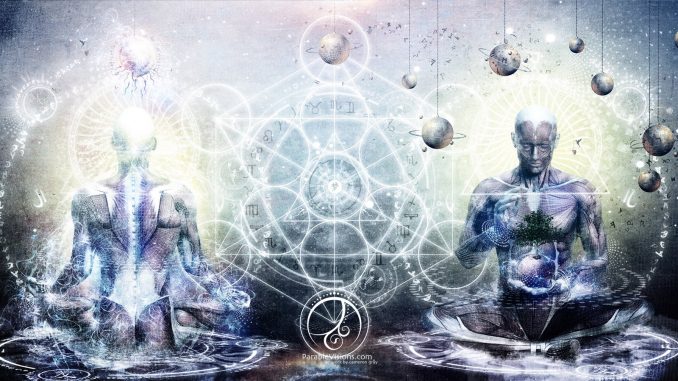
Theoretical Physicist, John Wheeler was the first to point out that the fundamental aspect of reality is not matter or energy but information. In his recent book, “Till the End of Time,” cosmologist Brian Greene hypothesises based on our current understanding of science about what the distant future of the universe holds – a future so remote that a trillion years is but the blink of an eye. A maximum entropic future when protons have decayed, when Hawking Radiation has led to the evaporation of the last Black Holes, and when the Higgs Field disintegrates and reality is left with absolutely nothing.
How then are we to contemplate meaning and purpose in such a universe? Michael Shermer, editor of Skeptic Magazine says, “If we define spirit as the pattern of information of which we are made – our genes, proteins, memories and personalities – then spirituality is the quest to know the place of our essence within the deep time of evolution and the deep space of the cosmos.”
In Vedanta philosophy, the Dance of Nataraja may signify (metaphorically) the dance of the subatomic world and the cycle of creation, evolution and destruction of the universe. In 2004, a 2m statue of the dancing Shiva was unveiled at CERN, the European Center for Research in Particle Physics in Geneva. The statue was given to CERN by the Indian government to celebrate the research center’s long association with India. A special plaque next to the Shiva statue explains the metaphor of Shiva’s cosmic dance with quotations from physicist Fritjof Capra:
Hundreds of years ago, Indian artists created visual images of dancing Shivas in a beautiful series of bronzes. In our time, physicists have used the most advanced technology to portray the patterns of the cosmic dance. The metaphor of the cosmic dance thus unifies ancient mythology, religious art and modern physics.
The Upanishads talk about how sentient beings are manifestations of the Absolute – the Brahman – the intangible non-objective ground of everything that exists – the which than which there is no whicher – that circle whose centre is everywhere and whose circumference is nowhere.
It would be wise for us to consider reality in shades of grey and perceive the inherent oneness and duality of everything. Balance is key. We must endeavour to take a yin-yang approach to life: pragmatism and spirituality, scepticism and belief, reason and emotion, the Apollonian and the Dionysian, the literal and the metaphorical, the masculine and the feminine, the organic and the mechanistic, empiricism and mysticism, rationality and intuition, Aristotle and Buddha, logos and mythos, linear and lateral thinking, induction and deduction, investigation and insight, synthesis and analysis, experimentation and imagination, intellect and instinct, science and the arts, technology and philosophy, sobriety and psychedelia, action and meditation, agency and contemplation.
Eastern mysticism and western empiricism are both parts of our quest to make sense of reality and our existence. There ought to be a time and place for both in our lives.